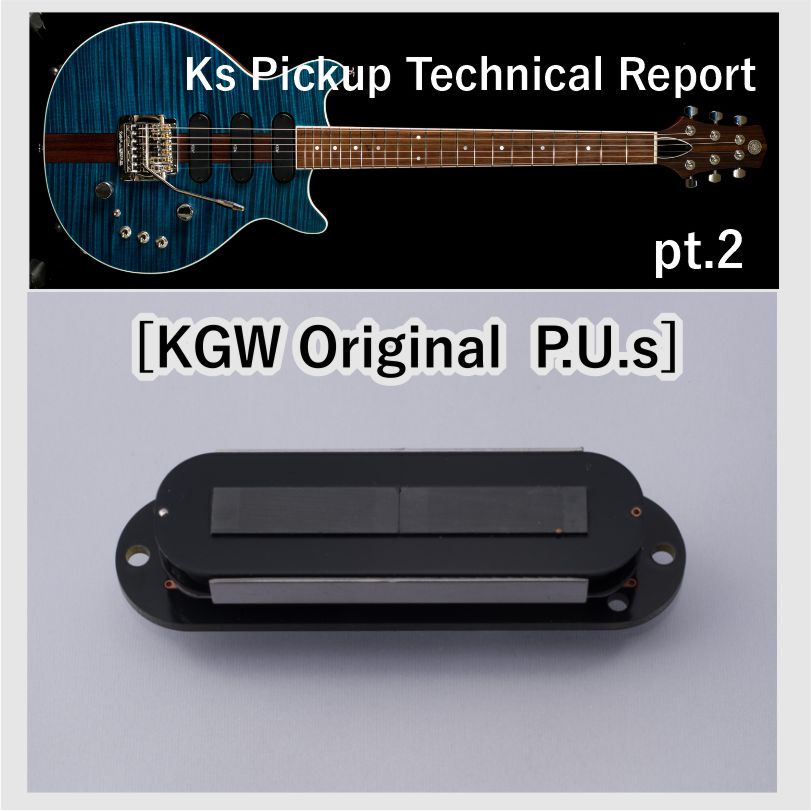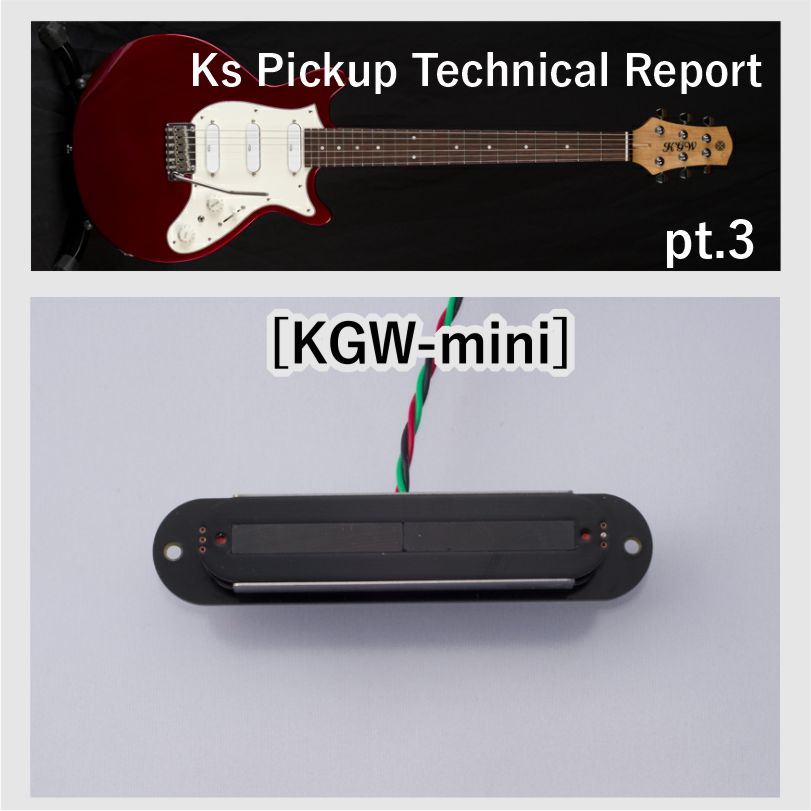Kz Pickup Technical Report Pt.1 [KGW T-S]
One of the most noteworthy features of Kz Guitar Works is its original pickup. Normally, the guts of the pickup cannot be seen because it is covered. But here we will remove the pickup cover so that you can closely see how its inside looks like. Also, we asked Jun Sekino, technical writer who has contributed articles to famous musical magazines, to explain the details.
Firstly, we introduce our “KGW T-S”. It is manufactured by us and was introduced in April 2021. Its design is based on the pickup on Brian May’s “Red Special” guitar. The construction of the KGW T-S is derived from the Tri-Sonic pickup by Burns, but our own examination and measurements of the pickups of Brian’s original Red Special are reflected on its design. It yields the sound closer to that of the original Red Special. Now, let us explain its details along with its historical background.
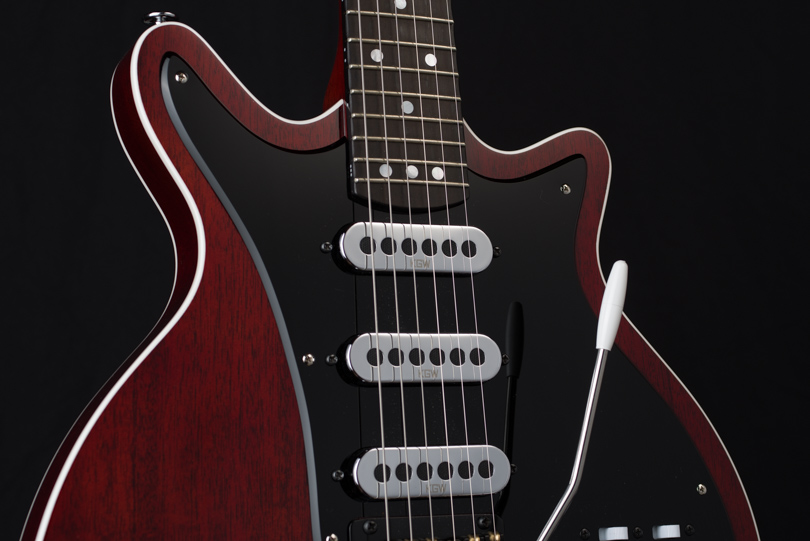
■KGW T-S is a recreation of Burns Tri-Sonic pickup
The KGW T-S is a recreation of the Burns Tri-Sonic from the early 60s mounted on Brian May’s Red Special. “RS”. It is the result of the close relationship between Kazutaka Ijuin, founder of Kz Guitar Works, Brian May and Greg Fryer who restored Brian’s own Red Special.
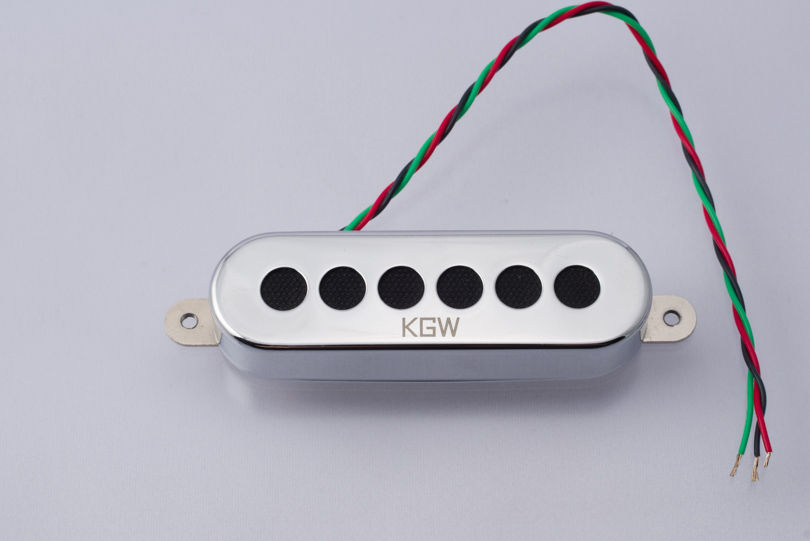
■Inheriting the originality of Burns Tri-Sonic pickup
◇Ferrite magnet and York to control the magnetic field
The pickup developed by Jim Burns is a single coil pickup, but its specification is so unique that it is vastly different from those of the US-made pickups of Gibson or Fender. There are many variants according to the year of production and types. The one Brian chose used a pair of thick ferrite magnets for the treble and bass strings respectively. The magnets are placed side by side so that they work as one long bar magnet together and yield a strong magnetic field between the third and the fourth strings. The steel U-shape bottom plate of the pickup functions also as a yoke to control the magnetic field. The magnetic field of the current version of Tri-Sonic pickup is quite strong, but the magnets in the KGW T-S are de-magnetized through a special procedure based on their measurement of the real “RS” pickups.
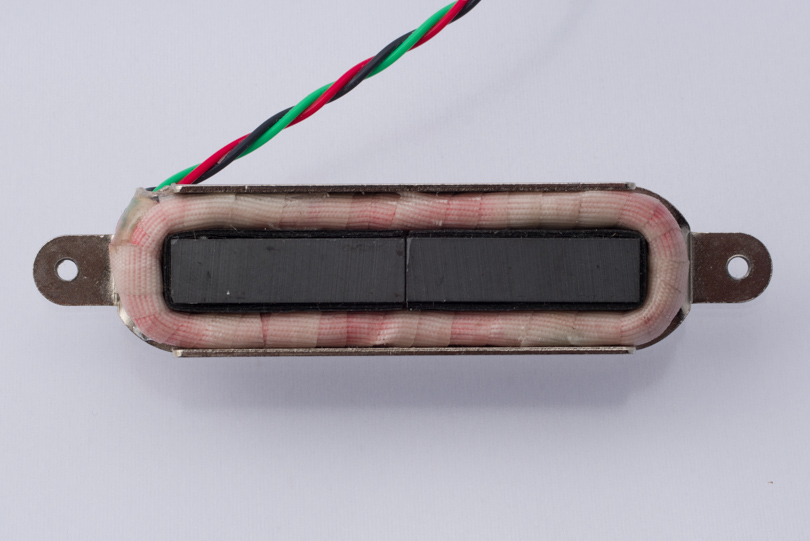
▲KGS T-S with its cover removed. Two bar-type ferrite magnets are surrounded by the air core coil. The magnet/coil component is mounted on the U-shape yoke.
◇Air core coil
Surprisingly, this pickup lacks the bobbin. Instead, an air core coil is mounted around the ferrite pole piece. The coil is wound without any tension, which contributes to the rich complex harmonics. The gauge of the wire used for the coil is of AWG44 which is 2-step thinner than that of the wire commonly used for the US-made pickups. Its number of coil turns is about 50-60% of that of the US-made ones, but the output signal level of the pickup is relatively high due to its unique magnetic field.
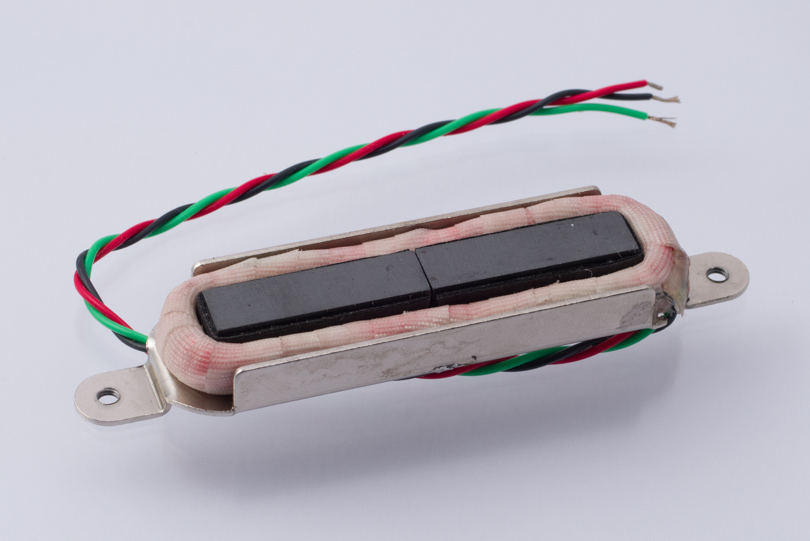
▲The guts of the pickup seen from an oblique angle. The steel yoke directs the magnetic field. Only the neck pickup uses a dummy yoke made of nickel.
◇One-and-only sound
The characteristics of the sound of a pickup depend on various factors. It is especially difficult to describe the characteristics of a uniquely designed pickup like the Tri-Sonic. The ferrite magnet contributes to the pronounced highs and the high output, while the thin wire creates the mellow lows. The low number of the turns also contributes to the sensitive tone of the highs, and the broad shape of the coil adds the mellowness to the tone. The chrome-plated pickup cover made of brass then adds a smooth contour to the overall sound. These various elements react each other in a complicated way to create the unique characteristics of the Tri-Sonic pickup.
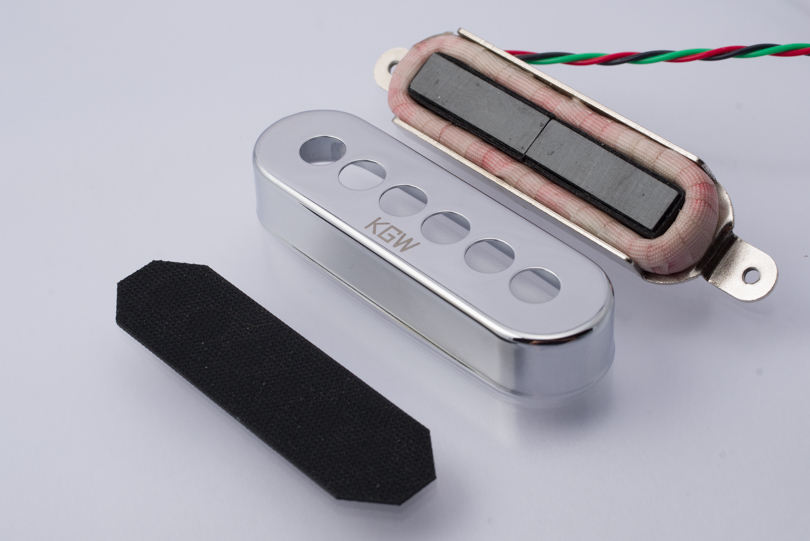
▲The pickup cover and the rubber sheet similar to the one used in Brian’s pickups.
◇Customized based on the measurements of Brian’s pickups.
The vintage Tri-Sonic pickups shows inconsistent characteristics, which is exacerbated by the secular change. The KGW T-S is designed and manufactured based on the measurements of the pickups mounted on Brian’s own “RS”. There is around 10% of difference between the numbers of coil turns of three pickups of his “RS”, and the variation is also recreated in the set of KGW T-S. In fact, the yoke of the neck pickup on the “RS” which is essential to the sound was removed by Brian himself. In order to recreate this, the neck pickup or KGW T-S has a dummy yoke made of nickel, as opposed to the steel yokes used in the KGW T-S for the middle and the bridge.
KGW T-S is not only the recreation of the construction and specification of the Tri-Sonic pickups from the 60s but also the characteristics, the secular change of the magnet and Brian’s own modifications of the specific samples mounted on the “RS”.
(Text : Jun Sekino /Translation : Akira Sakamoto)



